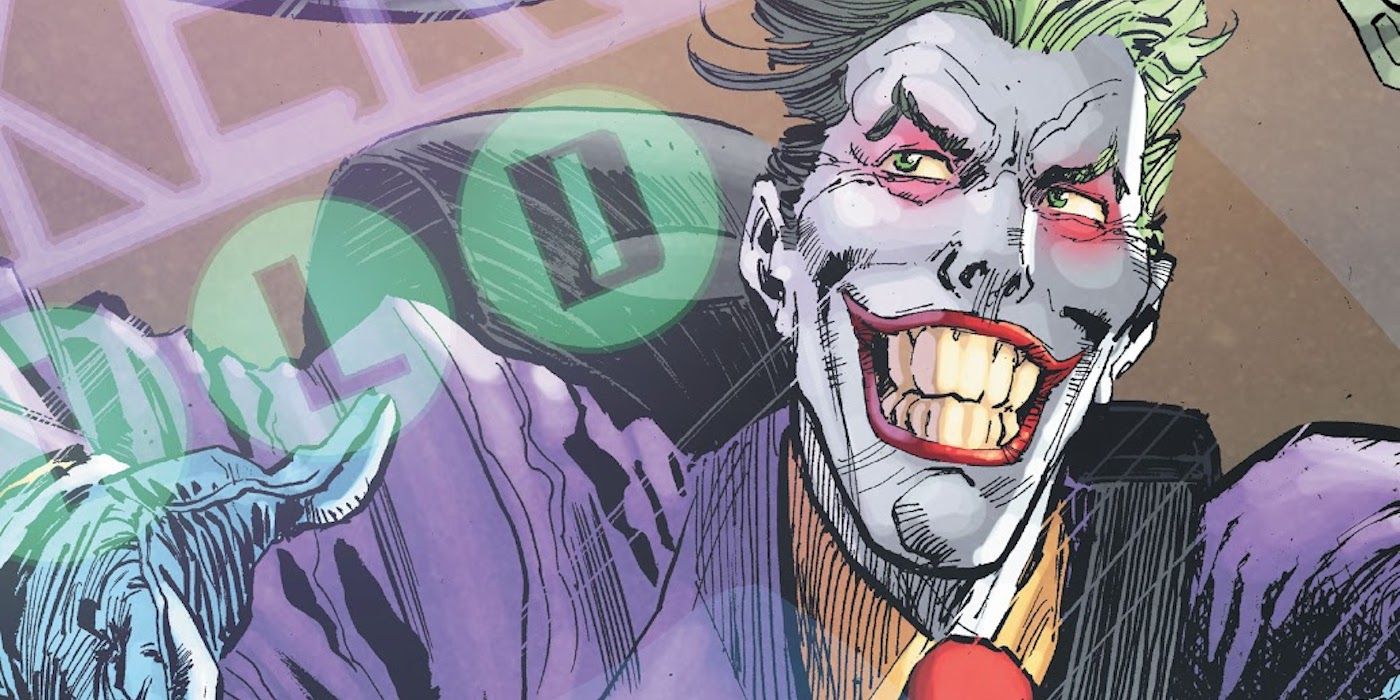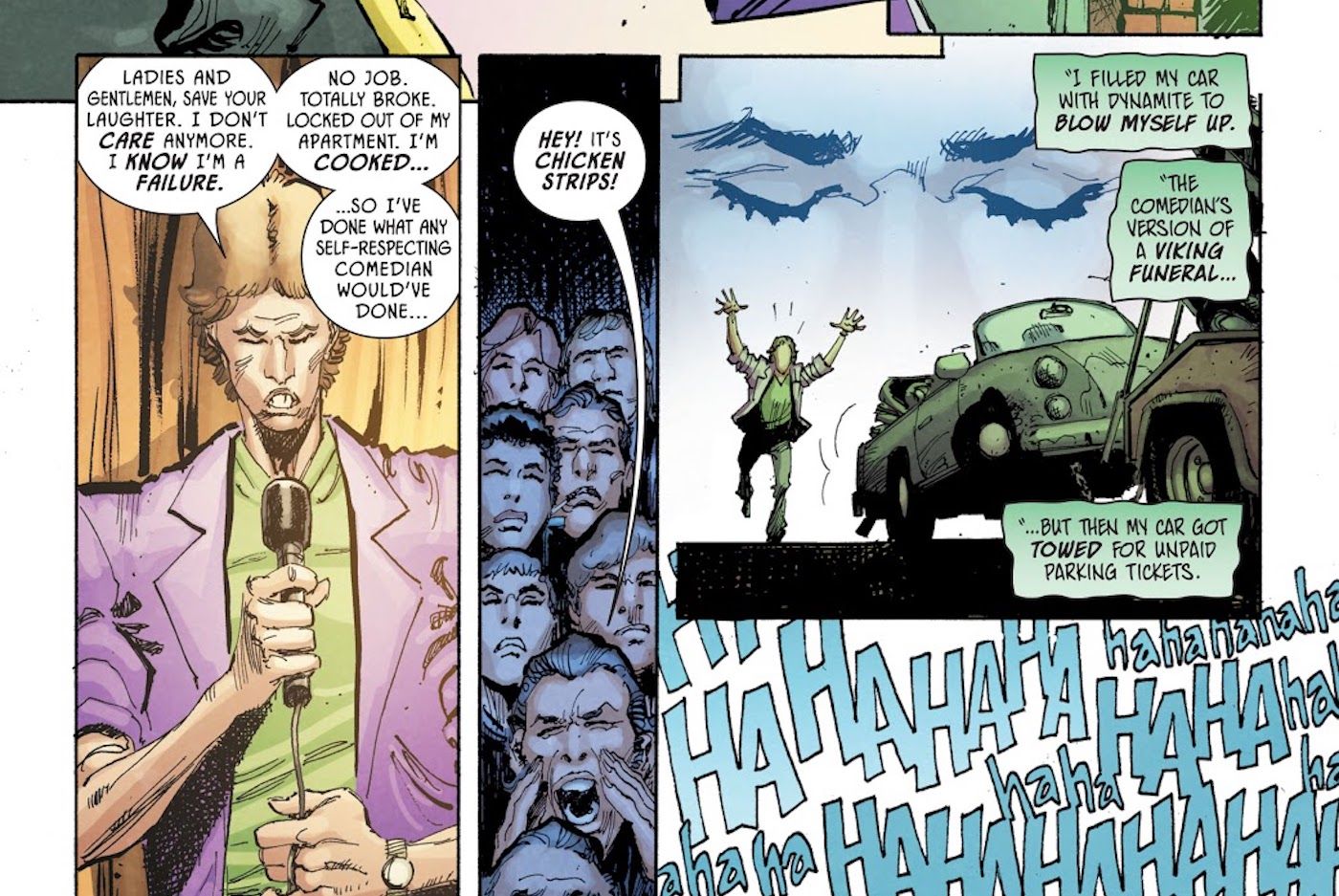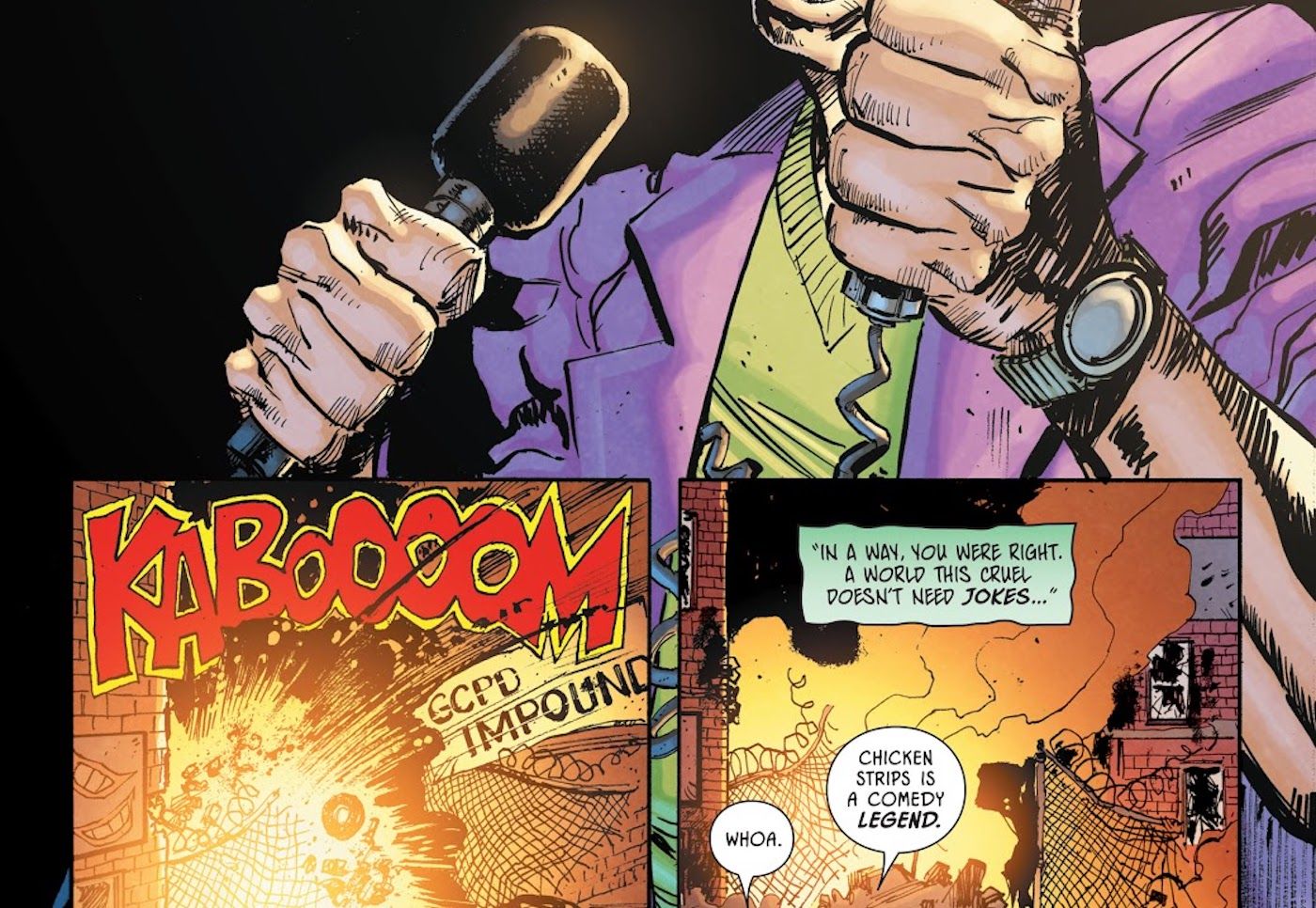WARNING: The following contains major spoilers for Batman: Gotham Nights #9, by Mark Russell, Christopher Mooneyham, David Baron and Ferran Delgado, available now.
While it's not officially in canon, Batman: The Killing Joke does seem to be the definitive origins of the Joker fans hold onto most dearly, so much so Todd Phillips adapted it for his popular film starring Joaquin Phoenix. That '80s story by Alan Moore and Brian Bolland depicted Joker as a failed comedian that turned to crime after everything in his life fell apart, from his family to his job.
Now, Batman: Gotham Nights #9 puts a darker spin on this career failure, though it's not necessarily a fact in the mainstream DC Universe.
In "Whacha Got In The Trunk," Joker appears in his pre-clown days, failing on stage at the worst club in Gotham in the 1987, Awkward Silences. He's even given the nickname of "Chicken Strips," as he has to double as a waiter. Everything's falling apart, but Tony Finks, the person who runs the club circuit, tells him it's what's "under the hood" that counts and promises him a high-profile gig at the esteemed joint, Joker's Wild. In fact, Fink advises him how to be a joker, so this builds his confidence.
Unfortunately, Joker's not on the list when the night comes, and he's embarrassed at the door. Things get even worse when he's then evicted from his apartment. As a result, he heads to Awkward Silence once more, angry and not caring if he's funny, with a trigger. He reveals his ultimate punchline is to jump in his car and blow himself up like in a Viking funeral. But the joke's on him, as he has unpaid parking tickets. This means he gets towed, and so he blows up the impound. Fans are shocked when they realize the anarchy he caused, creating a local legend.
This seems to inspire him to a life of crime, as he realizes it's not about pleasing people, but himself. People want to laugh at the world burning, so he desires to give that anarchy to him on his own terms. It's more cynical than Moore's story, which is more ironic. In this case, readers don't feel as much sympathy for Joker, as criminals don't take advantage of him or dump him in acid at Ace Chemicals. This mic drop is darker and deliberate, with the clown choosing to become a villain rather than by happenstance.
To top it off, the man he points a gun at in the present and takes hostage is none other than Finks. He's come for payback and lets him know that he was right about one thing: The city does need a Joker. The Clown Prince of Crime has one last quip, however, as he says it's not what's under the hood -- a nod towards Joker being Red Hood in the botched robbery that birthed him -- it's what's under the trunk. He drives off with Tony gagged in his trunk, although the way he points the gun at the comedy mogul, we don't know if he's alive or dead. This is the kind of ambiguity The Killing Joke ended on regarding whether or not Batman choked Joker to death, and as the Clown Prince of Crime speeds off, it's clear this is very funny to him.



